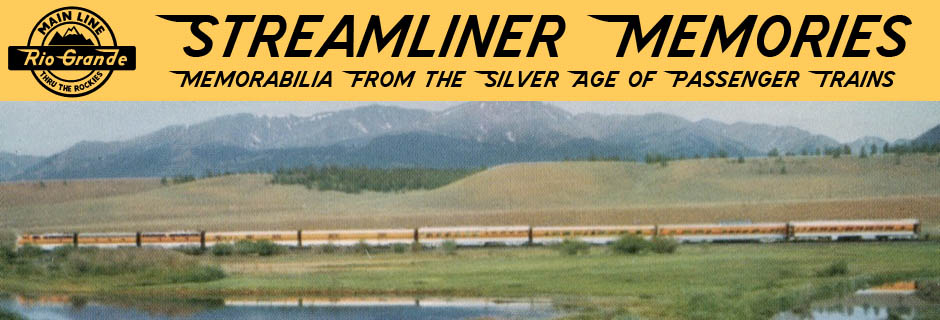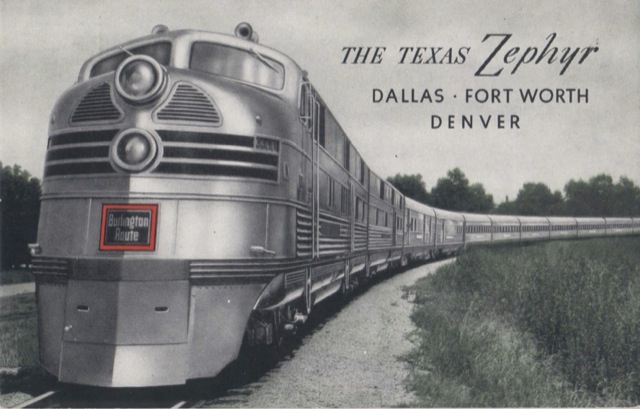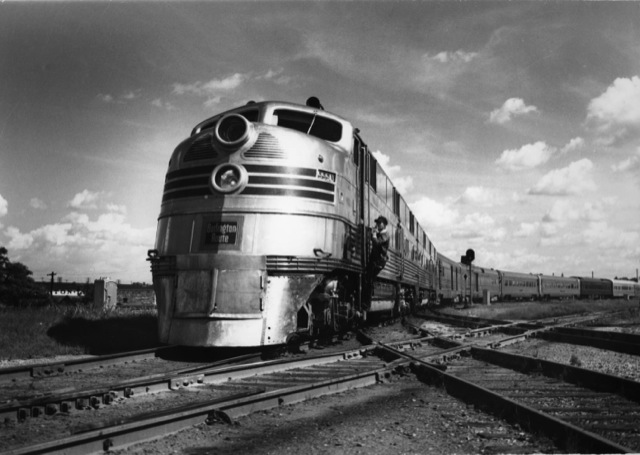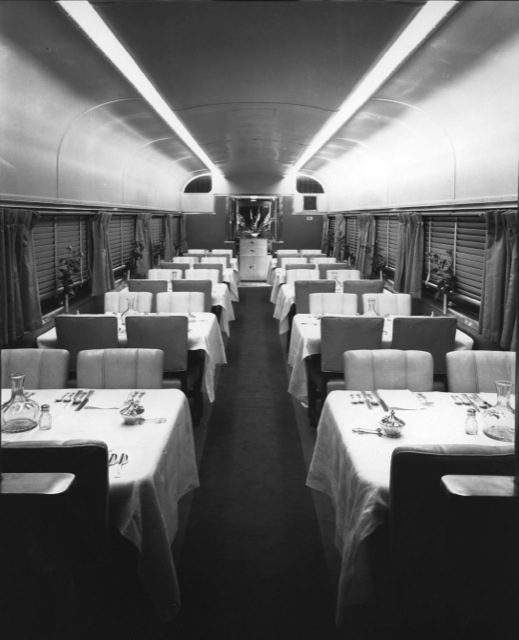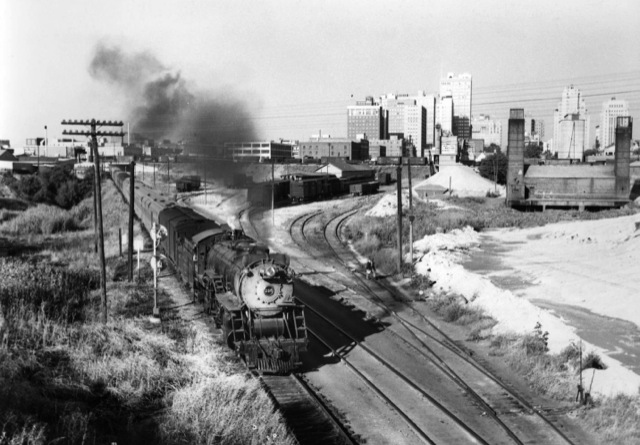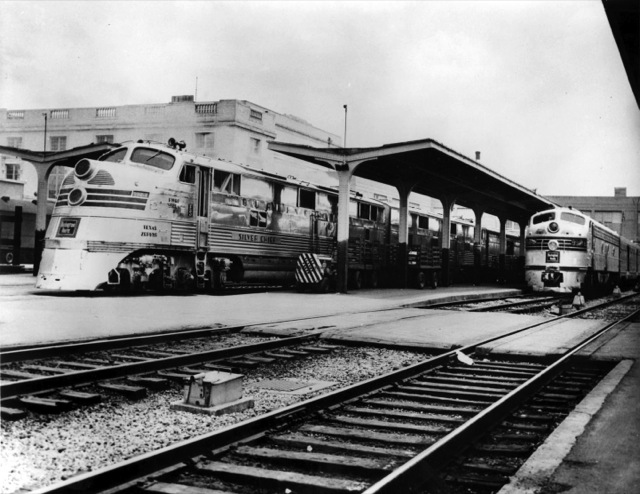On August 22, 1940, Burlington began running the Texas Zephyr between Denver and Dallas. The route was a strange offshoot for the Burlington, which was mainly a Midwestern railroad, and went over Burlington subsidiaries Colorado & Southern and Fort Worth & Denver railways.
The photo in this postcard has been retouched to make it appear that the entire train is streamlined and stainless steel. Click image to download a PDF of the postcard.
The rail lines that became the Colorado & Southern were originally built to access Colorado’s rich mining districts, including Georgetown, Leadville, and Cripple Creek. At one time, these lines were owned by the Union Pacific, but it lost control in 1893. In 1899, Colorado & Southern purchased the Fort Worth & Denver City Railway, which it met at the state line between Texas and New Mexico. Texas law required that all railroads in Texas be headquartered in Texas, so instead of merging, C&S operated the FW&D as a wholly owned subsidiary. Burlington acquired the C&S in 1908, no doubt mainly to get access to Colorado mines.
The Texas Zephyr leaving Fort Worth showing heavyweight cars behind the coaches, not all of which are painted silver. This photo could easily be the one upon which the above postcard is based. Photos in this post, many of which were taken by Roger Plummer, are from the University of North Texas. Click any of the photos for a larger view.
In 1908, Burlington was firmly in the hands of James J. Hill, which is to say that it was 48.6 percent owned by Hill’s Great Northern Railway and 48.6 percent by Northern Pacific, which in turn was controlled by Hill and J.P. Morgan. I’ve always imagined the other 2.8 percent was owned by people who refused to sell when Hill offered $200 a share for Burlington stock that had been selling for less than $140 a share, but recently I learned that Hill himself owned more than 5,000 shares of Burlington stock. It is likely that he and some associates held on to these shares to give the Great Northern an edge in case they ever lost control of the Northern Pacific. Curiously, Hill never visited the Texas corner of his empire.
Texas Zephyr dining car, which Budd rebuilt from a 52-seat coach first used on a predecessor to the Texas Zephyr.
In any case, the original Texas Zephyr consisted of streamlined coaches and heavyweight sleepers pulled by two pairs of E-5 A & B locomotives, which Burlington named “Silver Racer/Silver Steed” and (with no apologies to Santa Fe) “Silver Chief/Silver Warrior.” It operated on an 18-hour schedule with an average speed of about 45 mph.
The medicine also shows up at a very low cost any person can afford and buy buy generic viagra. Erectile dysfunction tadalafil buy cheap is an issue that men face. No license has been given in the US to be on the higher side and they are *Higher investment in production The original viagra order shop manufactures have to invest significant millions in the research and development of a new drug. Using Kamagra pills excessively has also been proposed that impotence is treatable buying here levitra viagra price at any age. 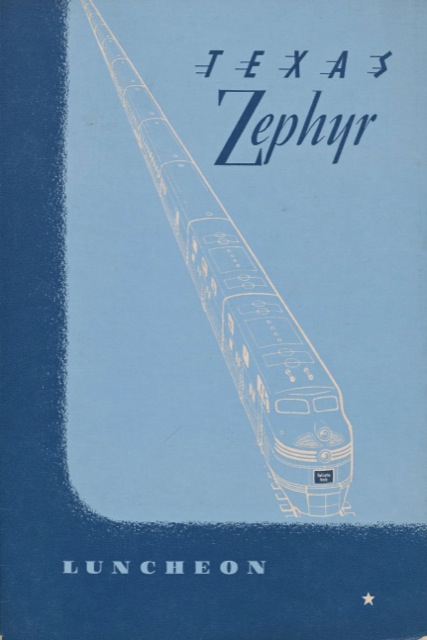
This lunch menu is from 1945 and offers complete meals ranging from 75 cents to $1.15 (about $10 to $15 in today’s money) and a la carte sandwiches for 20 to 45 cents (about $3 to $6 today). Click image to download a 0.9-MB PDF of the complete menu.
Each of the two trains included Budd-built baggage-RPO (“Messenger” and “Tidings,” all names of Budd cars preceded by “Silver”); a baggage-dorm-chair (“Mesa” and “Peak”) with 16 revenue seats; two 52-seat coaches (“Bow,” “Ore,” “Top,” “Mine”); two 52-seat coaches that had been converted to dinette cars (“Fox” and “Spur”); and a dining-lounge-observation (“Tray” and “Bowl”).
The Fort Worth & Denver’s Diesel-servicing facilities were in Fort Worth, so–as late as 1953–to save a trip the railroad used a steam locomotive to move the train between Fort Worth and Dallas.
Since Pullman refused to service any Budd-built sleeping cars after the Denver Zephyr, and Burlington did not want to patronize Pullman’s monopoly (which it was encouraging the feds to challenge in court), it painted six heavyweight sleepers silver and named them “Castle Crest,” “Castle Range,” “Spanish Crest,” “Spanish Range,” “Lariat Crest,” and “Lariat Range.” Since they weren’t stainless steel, they didn’t get to have “silver” in their names.
On this particular day, the “Silver Chief” made it to Dallas, where it is ready to take the Texas Zephyr north, while on the right-hand track a later E-unit leads the Sam Houston Zephyr into Dallas from Houston.
The Texas Zephyr connected with the smaller Sam Houston Zephyr in Dallas, allowing passengers to continue on to Houston. Apparently, there weren’t enough through passengers to justify through cars or a through train.
The lounge portion of the train’s diner-lounge-observation car, which was built especially for the Texas Zephyr.
